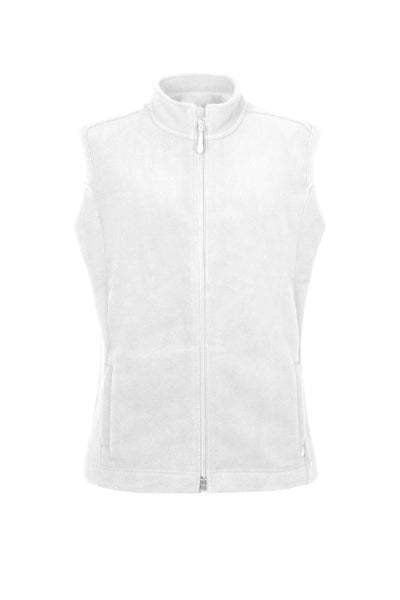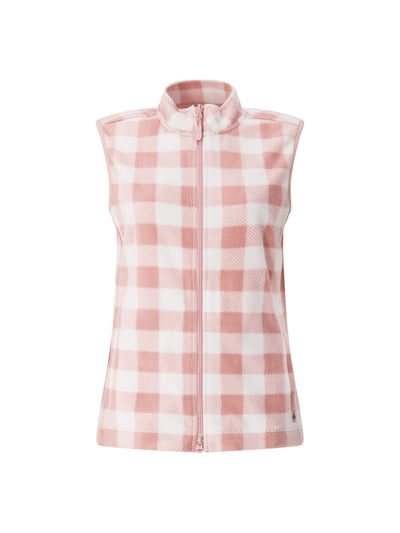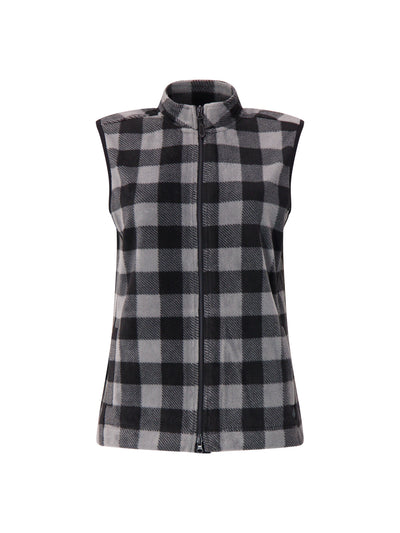The terminology surrounding clothing can sometimes be quite perplexing, especially when you delve into specific terms like "gilet" and "vest." While both garments serve similar functionalities, they can be distinct in various aspects, including design, purpose, and cultural significance. This article aims to clarify these differences and provide insights into which garment might be best suited for your needs.
Understanding the Terminology: Gilet and Vest
The words "gilet" and "vest" are often used interchangeably, but they represent different clothing items depending on the context. While both are sleeveless pieces of clothing worn over a shirt or top, their styles, designs, and intended uses can vary significantly.
The Origin of the Terms
The term "gilet" is derived from French and has been embraced in various fashion circles as a lightweight, sleeveless garment often almost synonymous with outerwear. Traditionally, it came with a more fitted silhouette and is frequently used for layering.
On the other hand, "vest" has its origins in the English language and is often associated with formal attire or suiting. The term "waistcoat" is also commonly used, particularly in British English, referring specifically to vests worn under jackets as part of a three-piece suit.
Modern Usage and Interpretation
In contemporary fashion, the gilet is typically characterized as a casual layer, often made from materials such as fleece, down, or soft-shell fabric. It is versatile enough to be worn during outdoor activities or as part of everyday wear. Conversely, a vest remains a staple in formal fashion, primarily used within business and formal settings.
The differences in these garments reflect not only their histories but also the evolving nature of fashion and how we express ourselves through clothing. For instance, the gilet has gained popularity in recent years among outdoor enthusiasts and urban dwellers alike, often seen paired with a simple t-shirt or long-sleeve top, providing warmth without the bulk of a full jacket. This adaptability makes it a favorite for transitional seasons, where layering becomes essential.
Meanwhile, the vest continues to evolve within the realm of formal wear, with designers experimenting with cuts, fabrics, and embellishments to create modern interpretations. Today, vests can be found in a variety of styles, from sleek and tailored to more relaxed fits, and they are often worn as statement pieces that can elevate a simple outfit. The resurgence of vintage fashion has also led to a renewed interest in waistcoats, with many opting for bold patterns and textures that add a unique flair to traditional attire.

Key Features of a Gilet
A gilet is much more than a simple sleeveless top. Its design and construction emphasize practicality and comfort, making it an essential piece for many wardrobes.
Design and Construction
Typically, gilets feature a more relaxed fit, allowing for freedom of movement. They are often made from insulation materials to provide warmth without adding bulk. The absence of sleeves offers a functional solution for layering, especially when you need warmth without restriction in the arms.
Additionally, gilets can come equipped with various pockets, zippers, and sometimes even hoods, making them both functional and stylish. These elements make them preferable for people who lead active lifestyles or enjoy outdoor sports. The fabric choices range from lightweight synthetic materials to more traditional wool blends, catering to different preferences and climates. Some gilets even incorporate water-resistant or windproof technologies, ensuring wearers stay comfortable in unpredictable weather conditions.
Practical Uses and Benefits
The versatility of a gilet is one of its key advantages. It acts as an excellent transitional garment, providing just the right amount of warmth during changing weather conditions. Many outdoor enthusiasts prefer gilets for hiking, cycling, and other activities where arm mobility is essential. Moreover, gilets can be styled in numerous ways, making them suitable for both casual outings and more formal events. Pairing a tailored gilet with a button-up shirt can create a smart-casual look, while a sporty gilet can enhance an active outfit.
-
Great for layering in cold weather
-
Lightweight and easy to pack
-
Available in various styles and materials
In addition to their functional benefits, gilets have also gained popularity in fashion circles. Designers have embraced this versatile garment, offering a wide range of colors, patterns, and cuts. From sleek, minimalist designs to bold, eye-catching prints, there is a gilet to suit every personal style. This adaptability not only makes gilets a practical choice but also a fashionable one, allowing individuals to express their unique tastes while enjoying the benefits of this functional outerwear.
Key Features of a Vest
The vest has a long-standing tradition in fashion, particularly within formal attire. Understanding its design and practical benefits can help you appreciate the versatility it brings to the table.
Design and Construction
Vests are usually tailored to fit snugly against the body, which gives them a sharp and polished appearance. They are made from a wide variety of fabrics, including wool and polyester blends, often featuring buttons or fasteners in the front. The design can include elements such as lapels and pockets, which further enhance the formal look.
Unlike gilets, vests often come in solid colors or subtle patterns, making them suitable for more serious occasions and ensembles that require a touch of elegance. The craftsmanship involved in creating a vest can be quite intricate, with some high-end options featuring hand-stitched details and custom fittings. This attention to detail not only elevates the garment's aesthetic but also ensures a comfortable fit that flatters various body types.

Practical Uses and Benefits
Vests are particularly favorable in professional settings, where they can be worn as part of a three-piece suit to create a more sophisticated look. Additionally, they serve as excellent layering pieces under blazers and over-dress shirts, making them incredibly versatile. The structured nature of a vest allows it to add an extra dimension to an outfit without the bulk of a full jacket, making it ideal for transitional seasons.
Moreover, vests can be a practical choice for those who want to maintain a polished appearance while enjoying the freedom of movement. They are perfect for occasions where you may need to remove a jacket but still want to look put-together. With the right accessories, such as a stylish tie or pocket square, a vest can seamlessly transition from a day at the office to an evening event, showcasing its adaptability in various social contexts.
-
Enhances formal attire for professional settings
-
Provides warmth without compromising style
-
Available in a multitude of fabrics and designs
Gilet and Vest: A Comparative Analysis
Now that we've explored the individual features of gilets and vests, comparing the two will provide clear insights into how they serve different purposes in fashion.
Differences in Style and Function
When it comes to style, gilets are generally perceived as more laid-back and casual, perfect for outdoor events or weekend outings. They often incorporate elements like high collars and puffy insulation, making them ideal for layering during transitional seasons. The versatility of gilets allows them to be paired with a variety of outfits, from jeans and a t-shirt to more rugged outdoor gear, making them a staple in many wardrobes.
Conversely, vests are tailored and refined, integrating smoothly into dressier ensembles. Often crafted from materials like wool, they can add a touch of sophistication to a suit or a smart, casual outfit. The differences in their intended purpose can be significant. Gilets are well-suited for activities that require mobility, such as hiking or cycling, while vests are designed to elevate an outfit's elegance, making them perfect for formal events, weddings, or business meetings.
Choosing the Right Option for Your Needs
Deciding between a gilet and a vest can come down to personal style and intended use. If you are looking for something to wear during outdoor sports or casual gatherings, a gilet is optimal with its practicality and comfort. Many gilets also feature pockets that are perfect for storing essentials like keys, phones, or snacks, further enhancing their functionality for active lifestyles.
In contrast, if you aim to enhance your business or formal attire, a vest would be more appropriate, showcasing your penchant for style and professionalism. The right vest can serve as a statement piece, particularly when it comes in bold colors or unique patterns, allowing you to express your individuality while adhering to dress codes. Additionally, layering a vest under a blazer can add warmth without sacrificing style, making it a smart choice for cooler months or air-conditioned environments.
Common Misconceptions about Gilets and Vests
Despite the clarity around these garments, several misconceptions persist. Understanding these can help influence better fashion choices.
Clearing Up Confusion
One common myth is that gilets and vests are interchangeable. While they may share the absence of sleeves, they serve different aesthetic and functional purposes. Gilets are generally associated with casual and outdoor settings, while vests typically belong in formal attire.
Moreover, some people believe that gilets are only for colder weather. In reality, gilets can be made from lighter fabrics suitable for spring and summer layering as well. This versatility makes them an excellent choice for transitional seasons, where temperatures can fluctuate throughout the day. Pairing a lightweight gilet over a t-shirt or a long-sleeve shirt can provide just the right amount of warmth without overheating, making it a staple in many wardrobes.
Debunking Myths
Another misconception is that vests are outdated or old-fashioned. This is far from the truth; vests have evolved significantly and can come in contemporary styles that appeal to modern buyers. They can also extend beyond the classic suit, finding a place casually as well.
Designers today experiment with various materials, colors, and patterns, allowing vests to be worn in a multitude of settings—from a smart, casual brunch to a formal event. The resurgence of vintage fashion has also contributed to the renewed interest in vests, with many fashion-forward individuals embracing retro styles that incorporate vests in innovative ways.
Understanding these distinctions allows individuals to make informed choices about their wardrobes and how they express personal style through clothing. By recognizing the unique characteristics of gilets and vests, fashion enthusiasts can curate outfits that not only reflect their personal taste but also suit the occasion. Additionally, this knowledge can inspire creativity in styling, encouraging individuals to mix and match these garments with other wardrobe staples for a fresh and modern look.
Heat Holders® Zip Vests for Warmth
Whatever you call them Heat Holders® zip vests and jackets are incredibly soft and warm and so versatile! These season spanning items are fantastic mid-layers in the winter or spring/fall jacket as you choose. Happy shopping!













